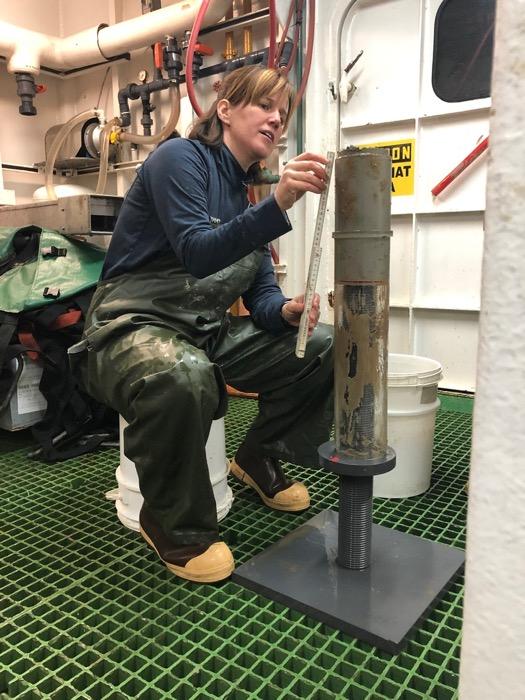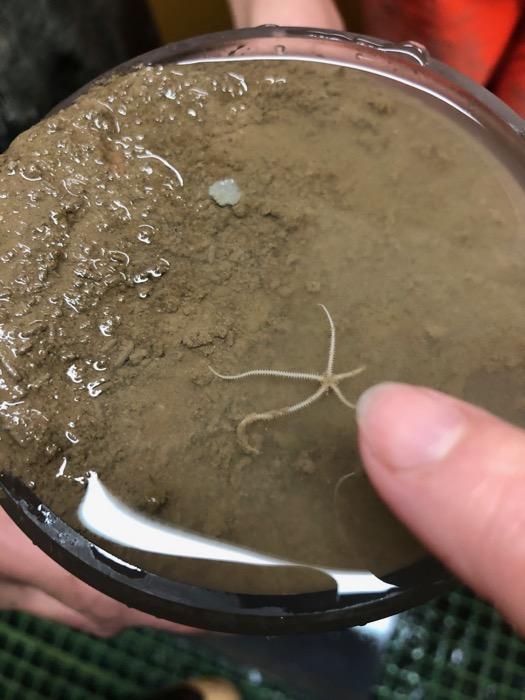Brittle Star
For someone who is a biologist at heart, there hasn’t been a lot of life to study onboard this ship. I’ve learned a lot about sediment and the ways it is collected and processed, and I’m even able to help out sometimes.

But when I’m anywhere near a core, I’m always hoping there will be some creature from the deep making an appearance. Yesterday, I spotted the fragile arms of this brittle star poking out of the mud, and all work had to cease so that I could take a picture and then attempt to rescue it - I’ll admit it is unlikely it survived both a trip to the surface from a depth of 700 meters (over 1000 feet), an extended photo session, and then an unsupported trip back down, drifting through cold black water to return to its home.

I didn’t know a lot about brittle stars, so I did some research with 2017 Wikipedia - no surprise that they are closely related to starfish. Some species of brittle stars have arms that can grow to over two feet long (up to 60 cm) and there are over 2000 different species, 1200 of which are commonly found in waters over 200 meters deep, and some species can survive in water over 6000 meters (3.7 miles) deep. I also found it very interesting that their mouth doubles as their anus (and I wish I could be there to watch all the adults explain the meaning of that sentence to the children - biology is the greatest!). While they don’t have eyes, they can detect the presence of light and have sensitive nerve endings in their epidermis that give them a sense of touch and allow them to detect the presence of chemicals in the water.


Comments